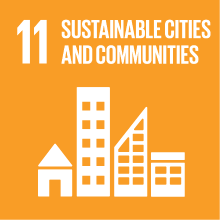POLYMERS FOR APPLICATIONS WITHIN THE CULTURAL HERITAGE
- Academic year
- 2023/2024 Syllabus of previous years
- Official course title
- POLIMERI PER APPLICAZIONI NELL'AMBITO DEI BENI CULTURALI
- Course code
- CT0581 (AF:467313 AR:254344)
- Modality
- On campus classes
- ECTS credits
- 6
- Degree level
- Bachelor's Degree Programme
- Educational sector code
- CHIM/04
- Period
- 1st Semester
- Course year
- 3
- Where
- VENEZIA
- Moodle
- Go to Moodle page
Contribution of the course to the overall degree programme goals
The course specific task is to introduce the student to the interdisciplinary world of polymer chemistry and physics. As matter of fact, today, polymers find widespread application either as materials for artistic expression either as materials for conservation of objects of cultural, historic and artistic interest.
Expected learning outcomes
a. Basic concepts: monomer, repeating unit, macromolecule. Polymer architectures isomeries.
b. Polymer polydispersion, average molecular weights and their determination..
c. Polymer physics. Amorphous and cristalline polymers. Tm and Tg.
d. Polymer mechanical behaviour: stress-strain curve, viscoelastic behavior
e. adhesion
f. Materials for consolidation
g. Coatings and film formation
f. Polymers as artistic materials.
2. Skill in applying knowledge and understanding
a. Conditions for solubility of a polymer.
b. Techniques for the determination of the PM of the polymer.
c. Understanding of the causes of polymers degradation.
d. How to choose a suitable polymer for a specific application?
3. Judgement skills
a. Choice of the polymeric material most suitable for a remediation in relation with reversibility and time.
4. Comunication skills
a. Acquaintance with the polymer chemistry terminology.
b. Ability in suitably discuss the issues connected with the use of polymeric materials in conservation.
Pre-requirements
Contents
Problem of restoration for contemporary art.
Monomer, repeating unit, polymer, polymer architectures and stereochemistry.
Molar mass distributions.
Polymer solutions. Teas diagrams.
Average molecular weights and their determinations,
Gel permeation chromatography.
Anti-writing materials.
Polymer synthesis: Carothers.
Polyamides and contemporary works.
Gelation. Gel cleaning systems.
Polyurethanes and contemporary works.
Amorphous polymers; semicrystalline polymers, Tg and Tm determination.
Microcrystalline waxes.
Polymers mechanical behavior
Adhesion and adhesives.
Natural and synthetic rubber.
Silicone resins and Restoration (protective, water repellent, consolidating).
Polyesters: synthesis, properties and their use for Restoration.
Acrylic resins in painting and in Restoration. Acrylfluorinated resins.
Surface coatings. Formation methodologies of a film.
Degradation of polymers by hydrolysis and photo-oxidation.
Pictorial binders. Drying oils.
Alkyd resins. Fluorinated polymers.
The use of polymers for Cultural Heritage: i) consolidating (for stone, glass, wood, canvas, paper); ii) protective; iii) adhesives.
The laboratory module will focus on the synthesis of a polymeric material to be used in the Cultural Heritage and the characterization through the following techniques: contact angle, permeability test, differential scanning calorimetry, chromatography (GPC), rheology, colorimetry.
Referral texts
- Leonardo Borgioli e Paolo Cremonesi "Le resine sintetiche usate nel trattamento di opere policrome", Ed Il Prato.
Further readings:
- O. Chiantore, et al. “Conservare l'arte contemporanea : problemi, metodi, materiali, ricerche” Electa, Milano 2005
Assessment methods
In particular, the oral exam is aimed at recognizing student acquaintance with:
- polymer chemistry language;
- the use of polymeric materials in conservation.
The oral exam may possibly include the presentation through slides of a restoration intervention that used polymeric materials.
The aim is to verify the student's ability to independently process the information received.
The oral exam lasts 30 - 45 minutes.
The final grade will be supplemented by the evaluation of the reports relating to the experimental activity.
Teaching methods
Further information
students with specific learning impairments:
Ca’ Foscari abides by Italian Law (Law 17/1999; Law 170/2010)
regarding support services and accommodation available to students
with disabilities. This includes students with mobility, visual,
hearing and other disabilities (Law 17/1999), and specific learning
impairments (Law 170/2010). In the case of disability or impairment
that requires accommodations (i.e., alternate testing, readers, note
takers or interpreters) please contact the Disability and
Accessibility Offices in Student Services: disabilita@unive.it
Type of exam
2030 Agenda for Sustainable Development Goals
This subject deals with topics related to the macro-area "Cities, infrastructure and social capital" and contributes to the achievement of one or more goals of U. N. Agenda for Sustainable Development


